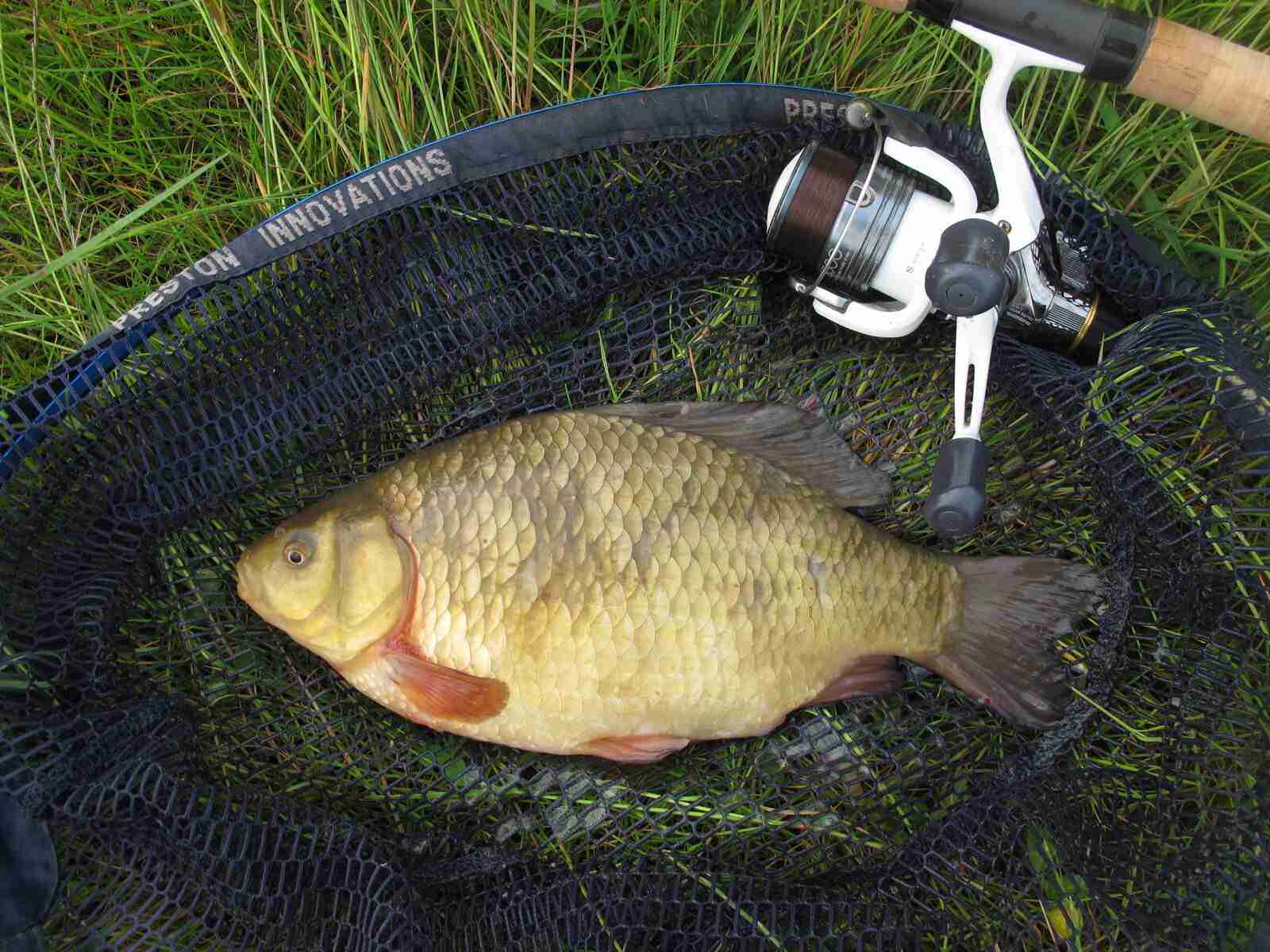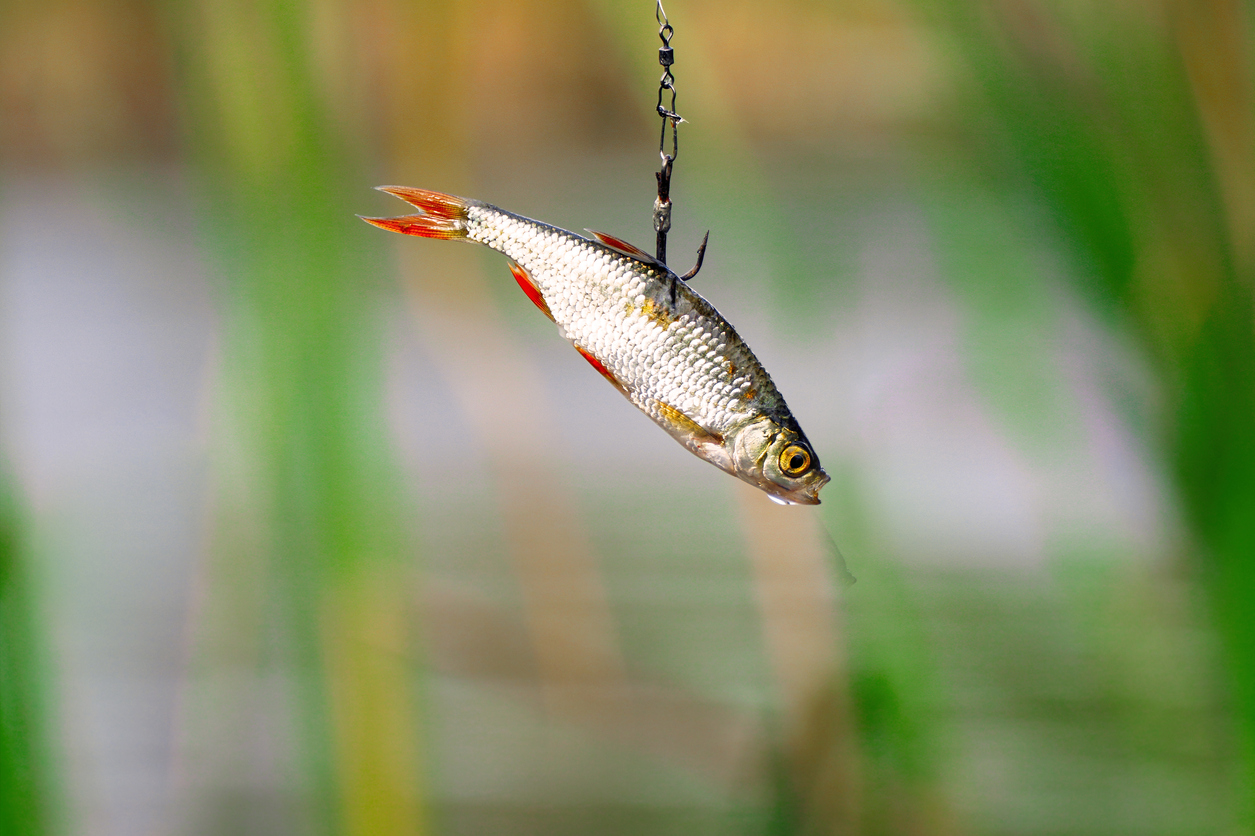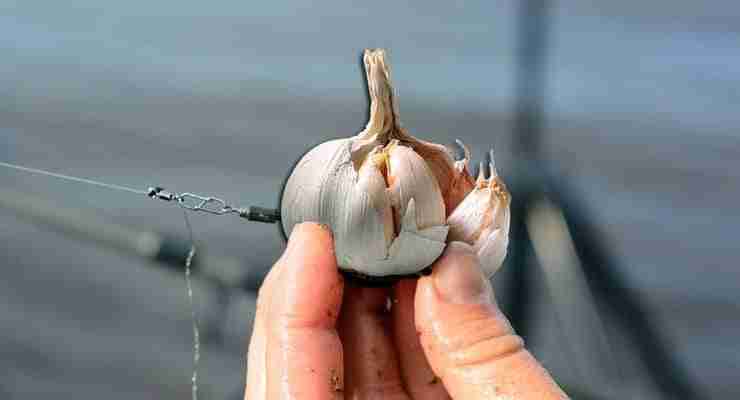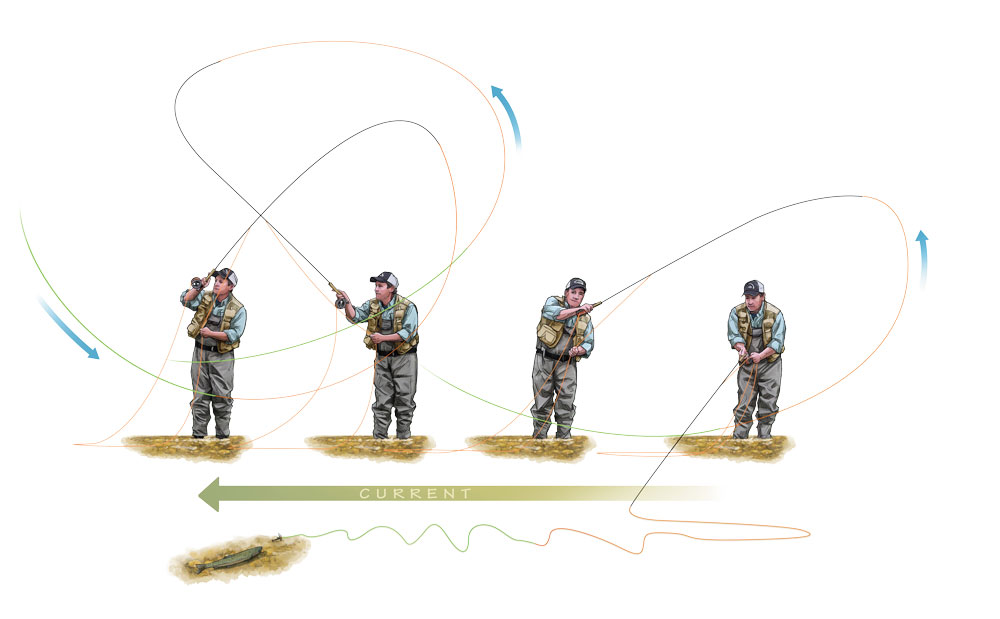
How Do You Cast in the Same Spot?

10 min read
You know that feeling when you nail the perfect cast—right into that tiny pocket in the weeds, or exactly where you saw that fish roll five minutes ago—and then spend the next ten casts trying to hit the same spot again? Yeah, we’ve all been there.
Precision casting isn’t just about showing off (though it definitely impresses the other anglers). It’s about putting your lure exactly where the fish are, cast after cast. Sometimes that sweet spot is only a foot wide, and being close isn’t good enough.
I’ve watched guys burn through entire fishing trips casting all around productive areas without ever hitting them consistently. Meanwhile, the angler who can drop a lure in the same dinner plate-sized spot repeatedly is usually the one going home with fish stories.
The Foundation: Your Reference Points
Before you even think about casting mechanics, you need to establish reference points. This is where most people mess up—they try to cast to a spot without properly marking it first.
Pick at least two reference points on shore that line up with your target. Maybe it’s a dead tree lined up with a dock post, or a big rock aligned with a distinctive house. The key is having landmarks that won’t move and are easy to spot from your fishing position.
Your boat position matters just as much as your target. If you’re drifting around while trying to hit the same spot, you’re fighting a losing battle. Anchor up, stake out, or use your trolling motor to maintain position. Consistency starts with a stable platform.
For bank fishing, this gets easier in some ways and harder in others. You’ve got a solid platform, but you need to be more precise about your body positioning. Mark your feet position with rocks or sticks if you need to. Small changes in where you’re standing create big changes in where your lure lands.
The Mechanics of Consistent Casting
Here’s where things get technical, but stick with me. Your casting stroke needs to be identical every single time. Same rod position at the start, same acceleration, same release point. Easier said than done, right?
Start with your rod tip position. Pick a spot—maybe pointing at your target or at a consistent angle above it—and start every cast from that exact position. This gives you a consistent baseline for everything that follows.
Your release timing is crucial. Most accuracy problems come from releasing too early or too late. Practice this: pick a spot on the ground near you and cast to it repeatedly. Focus only on release timing until you can hit that close target consistently.
The power of your cast matters more than you might think. Casting hard might feel more accurate because you’re really focusing, but it’s actually harder to control. Find the minimum power needed to reach your target and stick with that. Consistency beats power every time.
Reading Wind and Current
Wind will humble even the best casters, but it doesn’t have to ruin your accuracy. The key is understanding how wind affects your line and lure at different points in the cast.
Headwinds are actually easier to deal with than crosswinds. You just need more power and a lower trajectory. Tailwinds require less power but can cause your lure to overshoot if you’re not careful.
Crosswinds are the real challenge. You need to aim upwind and let the wind carry your lure to the target. How much upwind depends on wind speed and the weight of your lure. Light lures get pushed around more than heavy ones.
Current affects your lure after it hits the water, but it can also help with accuracy. If you’re casting upstream and letting your lure drift down to the target, you’ve got multiple chances to hit the zone instead of just one shot.
Lure Weight and Rod Selection
Different lures require different casting techniques, and some are just more accurate than others. Heavy lures are generally easier to cast precisely because they’re less affected by wind and easier to feel during the cast.
Your rod choice makes a huge difference. A rod that’s too soft won’t give you the accuracy feedback you need. Too stiff, and you lose the feel for your lure’s flight path. Medium power rods with moderate-fast actions tend to be the sweet spot for precision casting.
Longer rods give you more leverage and can help with accuracy, but they’re also harder to control in tight quarters. If you’re casting around docks or overhanging trees, a shorter rod might be more accurate even if it doesn’t cast as far.
The Mental Game
This might sound weird, but visualization is huge for casting accuracy. Before you cast, picture the exact flight path your lure will take. See it landing exactly where you want it. Your brain is surprisingly good at making your body follow that mental image.
Don’t rush your casts. I see guys firing out cast after cast, getting frustrated when they miss the target, then casting even faster. Slow down. Take time to line up each cast properly. Quality over quantity.
Develop a pre-cast routine, just like golfers have pre-shot routines. Maybe you check your reference points, visualize the cast, then execute. Having the same routine helps create muscle memory and consistency.
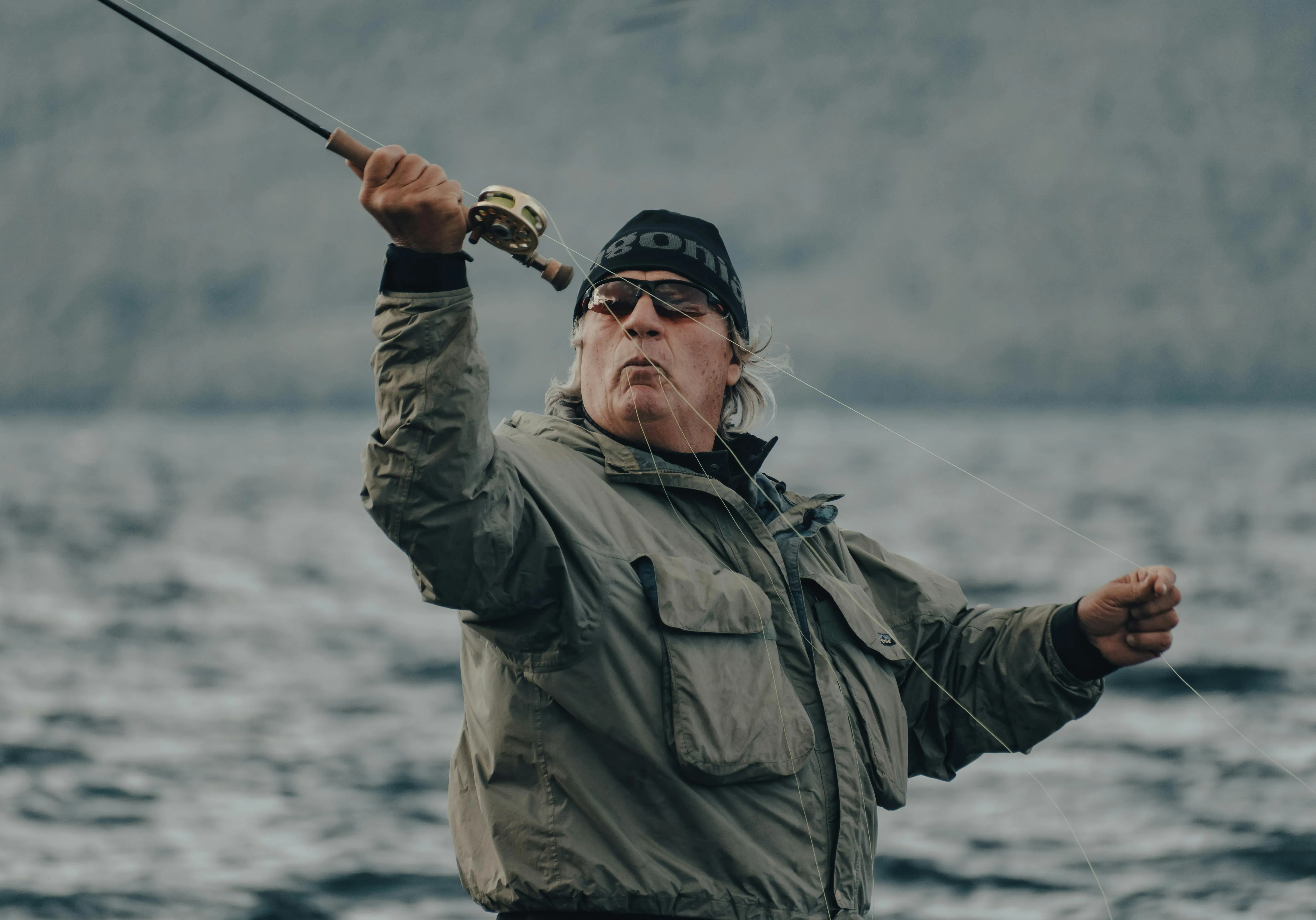
Practice Techniques That Actually Work
Here’s the thing about casting practice—most people do it wrong. They set up some targets in their backyard and fling lures at them for an hour. That’s not bad, but it’s not how you fish.
Practice like you fish. Set up scenarios that mimic real fishing situations. Cast around obstacles, practice skipping under docks, work on hitting moving targets. The closer your practice matches real fishing, the better it transfers to the water.
Use different lure weights during practice. A 1/4-ounce jig casts completely differently than a 3/8-ounce spinnerbait. If you only practice with one weight, you’ll struggle when you switch lures on the water.
Distance isn’t everything. Practice short, accurate casts too. Some of the most productive spots require pinpoint accuracy at close range, and that’s often harder than bombing long casts to open water.
Technology and Tools
Modern fish finders can actually help with casting accuracy. If you mark a waypoint on a productive spot, you can use that to help line up your casts. It’s not cheating—it’s using available tools to be more effective.
Some guys use casting aids like practice plugs or yarn balls for backyard practice. These work great for learning mechanics, but remember they don’t cast exactly like fishing lures. Use them for basic technique, then practice with real lures too.
Polarized sunglasses aren’t just for seeing fish—they help you see your target more clearly and track your lure’s flight path. Good sunglasses can actually improve your casting accuracy significantly.
Adjusting for Different Techniques
Flipping and pitching are all about short-range accuracy. These techniques actually make precision easier because you’re using pendulum motion instead of overhead casts. Practice getting your lure to land silently in exact spots.
Skipping requires a completely different approach. You’re not trying to hit your target directly—you’re trying to hit the water at the right angle and distance to skip into your target. This takes lots of practice but opens up areas other anglers can’t reach.
Sidearm casts can be more accurate than overhead casts in some situations, especially when dealing with wind or obstacles. The lower trajectory gives you more control, and the casting motion feels more natural to some people.
Working Around Obstacles
Casting around docks, trees, and other obstacles is where precision really matters. You can’t just aim for the general area—you need to thread the needle.
Break complex casts down into simpler components. Instead of trying to cast around a dock and under a tree in one motion, think about the path your lure needs to take. Sometimes a sidearm cast works better than overhead, or vice versa.
Practice the “stop cast” technique. This is where you stop your rod tip abruptly during the cast to kill the lure’s forward momentum. It’s great for dropping lures into tight spots without overshooting.
Reading Your Misses
When you miss your target, don’t just fire another cast. Figure out why you missed. Did the lure go left or right? Short or long? Understanding your misses helps you correct them faster.
Keep a mental note of patterns in your casting errors. If you consistently cast to the right of your target, you can compensate by aiming slightly left. Most people have consistent biases in their casting that can be corrected once identified.
Wind and current changes can throw off even perfect technique. If you were hitting your target consistently and suddenly start missing, check if conditions have changed. A shift in wind direction can completely change your cast dynamics.
Species-Specific Considerations
Different species require different levels of casting precision. Bass fishing around structure demands pinpoint accuracy, while fishing for schooling fish in open water is more forgiving.
Trout fishing, especially on small streams, is all about precision. You might only get one good cast to a particular spot before you spook the fish. Make that first cast count.
Saltwater fishing often involves casting to moving targets—following birds, bait schools, or cruising fish. This requires leading your target and predicting where it will be when your lure arrives.
Dealing with Pressure Situations
Tournament fishing or fishing with an audience can mess with your casting accuracy. The pressure to perform perfectly often makes people overthink their casts and tense up.
Stick to your routine regardless of the situation. If you have a pre-cast routine that works in practice, use it under pressure too. Consistency is more important than trying something new when it matters most.
Accept that you’ll miss some casts. Even the pros don’t hit their target 100% of the time. The goal is to be consistent enough that your hits outnumber your misses by a wide margin.
Equipment Maintenance
A reel that doesn’t cast smoothly will hurt your accuracy. Keep your reels clean and properly lubricated. Check your guides for nicks or damage that can affect line flow.
Line quality matters too. Old, kinked line doesn’t cast as accurately as fresh, quality line. Check for wind knots and weak spots regularly. Sometimes accuracy problems are equipment issues, not technique problems.
Final Thoughts
Precision casting is like any other skill—it takes practice and patience to develop. But once you’ve got it dialed in, it opens up so many more fishing opportunities. Those spots that other anglers can’t hit consistently become your honey holes.
Don’t get discouraged if it takes time to develop. Even experienced anglers are constantly working on their accuracy. The key is practicing with purpose and paying attention to what works and what doesn’t.
Remember, the goal isn’t to show off—it’s to catch more fish. Every cast that lands exactly where you want it is a cast that has the potential to produce. Miss the target, and you’re just practicing casting without the reward.
Start with easier targets and work up to more challenging ones. Master the basics before trying to thread needles between dock posts. Build your confidence with achievable goals, then push your limits as your skills improve.
Most importantly, don’t let the pursuit of perfect accuracy slow down your fishing. Sometimes a cast that’s close enough is better than taking forever to line up the perfect cast. Find the balance between precision and productivity that works for your fishing style.
